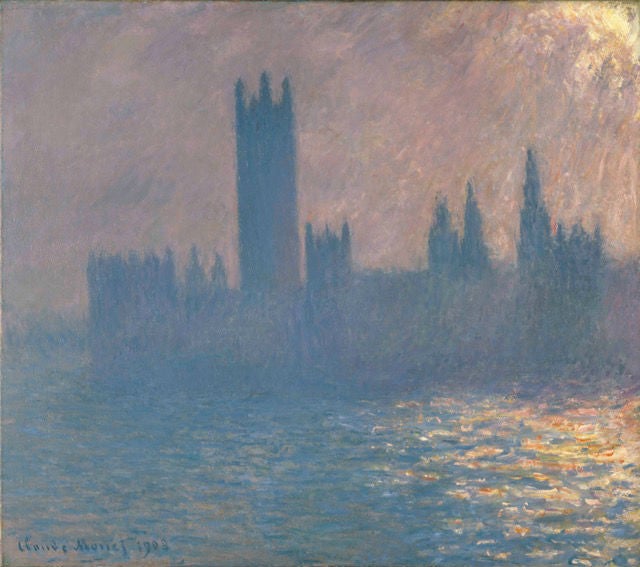Impressionists in London, Tate Britain, London, review: The show is deceptive
Perhaps half of it is by artists who would have been horrified even to be associated with the idea of Impressionism but the last room is the best with eight of Monet's views of the Thames

How do you pull a crowd? By the gentle art of deception. Be warned then: the main title of this exhibition is a gross misrepresentation of its contents. This is a not show teeming with views of London executed by the Impressionists, although it does contain many such views. Perhaps half of it is by artists who would have been horrified even to be associated with the idea of Impressionism. No, its main focus is touched upon – though scarcely fully and accurately described (how could a subtitle hope to do such a thing anyway?) – by the exhibition’s subtitle: French artists in exile, 1870-1904.
To your surprise, you will discover that much of this show treats of the impact upon art, the art market and individual artists of the Franco-Prussian War of 1870 and its bloody aftermath. It is about how artists fled after the destruction wreaked by the Prussians upon Paris, and of the bloody Commune that followed. All this is of absorbing interest and much of it little known. Photographic images of a great metropolis in smoking ruin are hung beside painted representations of that tragedy.
James Tissot had owned a great house on the Avenue Foch. Then the Prussians descended. Monet fled because he feared conscription. Manet stayed and joined the National Guard. Many came to London, and began to paint a city calm (though polluted) and imperially blessed – the Houses of Parliament was a new model of imperial might. Over in Paris, the emperor had abdicated, and then been obliged to flee. The Tuileries Palace was in ruins, the great pavilions of the Louvre punched open to the sky. Napoleon III’s destination? London. To Chislehurst. Carpeaux, sculptor of the second empire, hurried over to sketch him on his death bed in preparation for a dutiful academic sculpture made post mortem. You can see it here.
So many came flocking over to establish a new life for themselves in a rather alien place with quaint customs. James Tissot bought himself a fine house in St John’s Wood, and gently mocked and caricatured the absurdities of the upper classes. A dandy himself, how he loved to paint the fashionable fol de rols of those high-society swaggerers. Painter Alphonse Legros became a teacher at the Slade. Jules Dalou, a master of rapid modelling in clay in front of students with mouths agape, taught skills which helped to transform the way the English made their sculpture. But he was not an Impressionist. Beggar the thought! Nor was Gérôme or Fantin-Latour or Rodin or Dalou or many others whose work we can see here.
There is much fairly dull academic sculpture and dreary realist paintings in this show – it begins to sag badly about the middle. Not until the last few rooms does it pick up again, and Impressionism take centre stage.
The best rooms in the show in terms of the sheer quality of the painting are the last two. Did Whistler invent London fog as Oscar Wilde quipped? Three of his wonderful Nocturnes are here, though no one has tried to pretend that he too is a Frenchman in headlong flight from tragedy. You merely note, nodding towards the general slipperiness of the theme, that he is here at all.
And then the last room – best of all – shows us eight of Monet’s views of the Thames, many painted from his room at the Savoy, looking across towards the spectral presence of the Palace of Westminster and Victoria Tower, gloriously dizzying paintings of ever shifting elemental effects, dark, strangely looming, so mysterious in all their muffledness. How to seize the effect of sunlight through fog? The director of Tate Britain was right to have his picture taken in front of these canvases this morning, colluding somewhat in this gentle art of deception.
‘Impressionists in London – French Artists in Exile (1870-1904)’, Tate Britain, 2 November 2017 to 29 April 2018 (tate.org.uk)
Subscribe to Independent Premium to bookmark this article
Want to bookmark your favourite articles and stories to read or reference later? Start your Independent Premium subscription today.

Join our commenting forum
Join thought-provoking conversations, follow other Independent readers and see their replies